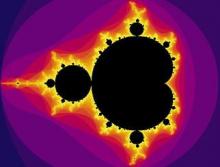Everyone who knows at least the basics of quantum mechanics knows how tricky and counter intuitive this highly successful theory is. Even one of the greatest minds among the developers of quantum mechanics, Richard Feynman, once said that "if you understand quantum mechanics, you don't understand quantum mechanics."
One of the few similarities between classical mechanics and quantum mechanics is that there is a main equation which can be manipulated mathematically to derive the equations which describe how a physical system behaves. For example Newton's law's (+ the law of gravity) can be used to derive almost all the equations needed to describe classical physical systems (pendulums, rolling balls, sliding blocks and all such stuff).Similarly Schroedinger's equation can be manipulated to derive the wave function and the probability distribution, which tells us, for example, where it is most likely to find a particle. So why is it that quantum mechanics has the reputation of one of the most counter intuitive theories of physics?
It's mostly because of many paradoxes, which seem illogical and too strange to be real sometimes. For instance, it's all perfectly normal in terms of the laws ruling the quantum world, for a particle to be in two places at once. Also, a elementary particles and other objects have properties of both waves and particles. And I don't even wanna start talking about strangeness of quantum entanglement and the double slit experiment.
So what all do these paradoxes tell us about reality? After all, it's hard for most of the people to believe that particles in reality can indeed be in two places at once and so on. This is where the opinion of scientists splits - some say there is no objective reality, some say there is some kind of objective reality but it can't be detected (due to the Heisenberg principle) and others believe that quantum mechanics is an unfinished theory. These opinions are reflected in a variety of different interpretations of quantum mechanics.
Actually, I've just found a great article, which talks about various interpretations of quantum mechanics and what they tell us about reality. You can find the link bellow. Also be sure to check out the website it is on. Nova has a bunch of great physics videos as well as amazing library of articles and other useful stuff.
Debating the Meaning of Quantum Mechanics
NOVA
Don't forget to subscribe, follow and comment. Cheers
One of the few similarities between classical mechanics and quantum mechanics is that there is a main equation which can be manipulated mathematically to derive the equations which describe how a physical system behaves. For example Newton's law's (+ the law of gravity) can be used to derive almost all the equations needed to describe classical physical systems (pendulums, rolling balls, sliding blocks and all such stuff).Similarly Schroedinger's equation can be manipulated to derive the wave function and the probability distribution, which tells us, for example, where it is most likely to find a particle. So why is it that quantum mechanics has the reputation of one of the most counter intuitive theories of physics?
It's mostly because of many paradoxes, which seem illogical and too strange to be real sometimes. For instance, it's all perfectly normal in terms of the laws ruling the quantum world, for a particle to be in two places at once. Also, a elementary particles and other objects have properties of both waves and particles. And I don't even wanna start talking about strangeness of quantum entanglement and the double slit experiment.
So what all do these paradoxes tell us about reality? After all, it's hard for most of the people to believe that particles in reality can indeed be in two places at once and so on. This is where the opinion of scientists splits - some say there is no objective reality, some say there is some kind of objective reality but it can't be detected (due to the Heisenberg principle) and others believe that quantum mechanics is an unfinished theory. These opinions are reflected in a variety of different interpretations of quantum mechanics.
Actually, I've just found a great article, which talks about various interpretations of quantum mechanics and what they tell us about reality. You can find the link bellow. Also be sure to check out the website it is on. Nova has a bunch of great physics videos as well as amazing library of articles and other useful stuff.
Debating the Meaning of Quantum Mechanics
NOVA
Don't forget to subscribe, follow and comment. Cheers







 5:37 PM
5:37 PM
 silentbob14
silentbob14













